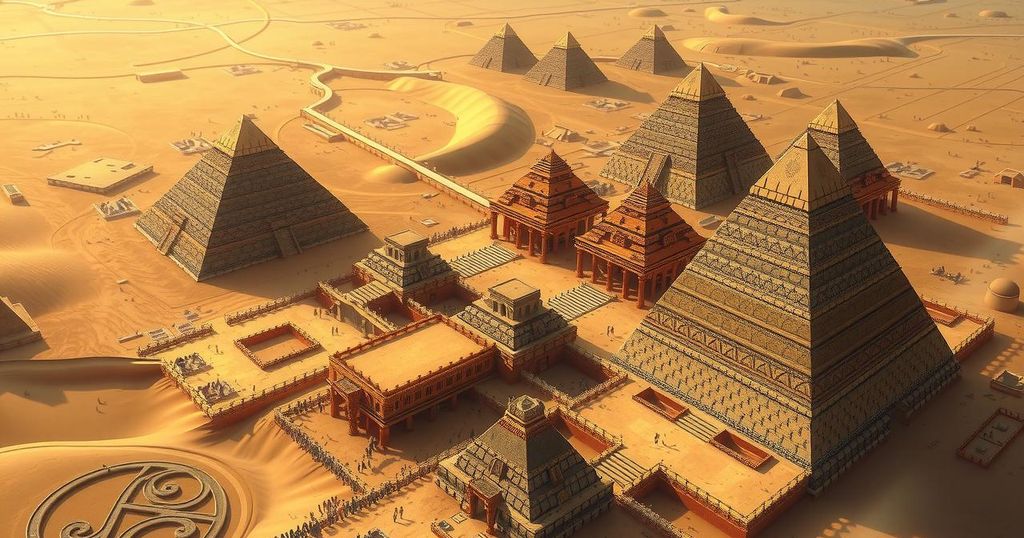Radar Scans Uncover Intricate Underground Structures Beneath Giza Pyramids

Recent scans utilizing Synthetic Aperture Radar (SAR) have uncovered extensive underground structures below the Pyramids of Giza, suggesting these were not only royal tombs but possibly had energy-related functions. This discovery reinforces alternative theories proposed by noted figures such as Tesla and Dunn about the ancient technology of the pyramids, inciting debate within the archaeological community.
Recent radar scans have unveiled an extensive underground network beneath the Pyramids of Giza, challenging the traditional view that these ancient structures primarily served as tombs for Pharaohs. This innovative study, conducted by Corrado Malanga from the University of Pisa and Filippo Biondi from the University of Strathclyde, employed Synthetic Aperture Radar (SAR) tomography, discovering a complex that extends about two kilometers underneath all three pyramids.
The radar analysis revealed five identical subterranean structures near the Khafre Pyramid, which is the second-largest on the Giza Plateau. These structures feature multiple levels interconnected by geometric pathways, accompanied by eight vertical cylindrical wells surrounded by descending spiral paths that extend up to 648 meters down, leading to two substantial cube-shaped edifices, each measuring 80 meters on each side.
A report from the Reese Report highlighted that these findings contest the widely accepted belief that the pyramids were exclusively used for royal burials. Researchers have suggested the possibility that the underground systems might have served mechanical or energy purposes, echoing the theories of notable figures like Nikola Tesla and Christopher Dunn.
Tesla postulated that the pyramids could harness and utilize Earth’s natural energy, while Dunn proposed in his book “The Giza Power Plant” that the Great Pyramid was a machine converting vibrations into usable energy. Conventional Egyptology asserts that the pyramids were constructed around 2500 BCE using standard building methods; however, the discovery of these underground structures, along with mathematical irregularities in the pyramids’ construction, has intensified debates regarding their actual functions.
The Khafre Project team is eager to conduct excavation work for more insights, although acquiring the necessary approval poses challenges, as Egypt has historically limited archaeological exploration that contradicts official narratives about the pyramids.
In summary, recent radar scans of the Pyramids of Giza have revealed a significant underground complex, challenging traditional interpretations of their purpose as mere tombs for Pharaohs. The findings suggest intricate systems that may have had mechanical or energy-related functions. This ongoing research has provoked discussions around ancient technology and continues to spark debate about the pyramids’ true origins and uses. Future excavations could provide deeper insights, but obtaining permission remains a significant hurdle.
Original Source: www.news18.com




